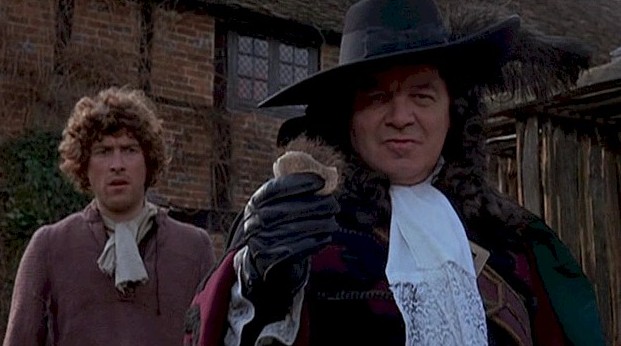 |
| Ladies and gentleman...the Hot Face Of Evil! |
1) The thing I find the most fascinating about this picture is how it’s dominated by Patrick Wymark’s Judge and Linda Hayden’s Angel Blake--and yet both actors only appear sporadically, especially Wymark. It’s to the credit of these two actors that they manage to cast a shadow over the story even when they’re nowhere to be seen.
2) The film also greatly benefits from being shot on location using mostly natural lighting. There is a definite sense of veracity to this small town, which makes the strange and disturbing things that happen all the more creepy.
3) God is Linda Hayden gorgeous. And while I still think she is while she’s wearing that ridiculous sheet and the black crepe-ish eyebrows in the third act, her Angel Blake is a tutorial in how to be seductively evil. There are moments when director Piers Haggard just focuses ever-so-briefly on Angel, and the way she’s staring, or the way her lips just curls gently into a smile, speaks volumes about the darkness in her heart.
 |
| "Verily, this cookie has gone bad..." |
4) Apparently, this script was written as three shorter films set in three different time periods before Haggard insisted on them being integrated into one story...and you know, that integration works to heighten the sense of this small rural town in Jacobean England falling into utter chaos.
5) One of the reasons I love films from this period of British cinema is how they’re populated by these amazing character actors that bring life even to their briefest scenes. I was particularly taken with Howard Goorney’s unnamed Doctor and Anthony Ainley’s naturalist Reverend Fallowfield, who bring a little nuance to their every moment on screen.
6) Perhaps the thing that I find so disturbing about the events in the film is how it’s almost entirely caused by a group of kids who seem to think they’re playing. And to make things even worse, Haggard adds these two old people in amongst the kids, laughing and smiling in encouragement that adds a whole layer of unsettlement to the proceedings.
7) According to Haggard, the centerpiece of this film--the ritual (incestuous, necrophiliac) rape and murder of Wendy Padbury’s Cathy, was improvised on the day. If that’s the case, it’s a magnificent piece of on-the-spot filmmaking. It’s truly scary for the way Haggard seems to play with our expectations, leading us to imagine all sorts of fates for Cathy...until we see what Angel has in store for the hapless young girl and we realize it’s much, much worse.
8) The greatest unsung hero in making this film so great is composer Mark Wilkinson, whose weird, woodwinds-intensive score that tweets and twitters like the crows that serve as one of the movie’s motifs. The way it seems to insinuate itself quietly, commenting on the events as they grow more and more out of control, contributes to the overall sense of unease in the story.
 |
| "Collect All My Parts And I Will Be....A MONSTA!!!" |
9) Okay...that freakin’ paper mache’ devil. What the.....? In a film that so skillfully creates mood and atmosphere and maintains such a creepy feel, the goofy looking demon hoping around just kills a lot of said atmosphere.
10) And while we’re on the subject, while I don’t think it has the buzz-kill aspect of paper mache’ devil, I find it amusing that The Judge warns people he will use unimaginable methods to kill the evil, and ‘unimaginable methods’ apparently equals a big honking sword, two mean dogs, and that deaf mute guy who got thrown off the roof in The Spy Who Loved Me.
Overall...a really amazing little horror film that manages to create a disturbing atmosphere throughout. One of the great jewels in the crown of Tigon’s career, and a shame that it’s not available on DVD or Blu-Ray in the United States.




